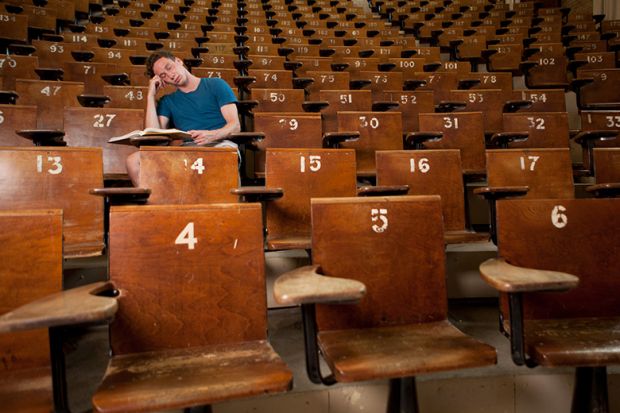The disappearance of thousands of Australian academics will have no “systematic” impact on university teaching quality because student numbers have fallen concomitantly, a parliamentary committee has heard.
The Department of Education, Skills and Employment told a Senate estimates hearing that it had tallied 6,912 “potential or actual” job losses so far, constituting some 5 per cent of the university workforce of about 137,000. But this was not expected to significantly affect teaching quality because international student enrolments had fallen between 10 and 12 per cent.
“At face value, [universities] are matching their staff reductions to something less than their workload,” first assistant secretary Dom English told the committee. “Their stated objective in most cases is to minimise staff losses as long as they can while they work out what the longer-term future looks like.
“All the universities acknowledge that moving to a more online model this year presented challenges. But from what we’ve seen so far we don’t have a systematic concern about the quality of teaching.”
The committee heard that the job loss figure was an estimate based on media reports. With the department’s official 2020 staffing statistics not due for release until late 2021, bureaucrats were tracking universities’ “concrete announcements” as “the next best approximation of what’s actually happening in the sector”.
The universities’ announcements may or may not include casual staff, the department acknowledged. Casual losses are thought to dwarf those among tenured employees. Altogether, the National Tertiary Education Union estimates that 10,000 staff have lost their jobs in Victoria alone.
The department said that it was too early to tell whether the government’s Job-ready Graduates funding reforms had influenced applications for university places in 2021. And it defended the government’s move to rein in student debt by ruling students ineligible for loans or teaching subsidies if they failed more than half their courses.
It has been reported that 139 Australians have amassed student debts of more than A$200,000 (£109,000). The department conceded that this was a small fraction of the 2.93 million people with student debts.
Greens education spokeswoman Mehreen Faruqi said it was difficult to see how this “tiny number” of debtors justified provisions that would deny students eligibility to government-supported places, particularly given that Canberra had already capped the debts that students were able to accumulate.
The loan limit is currently set at about A$106,000 for most students and A$153,000 for those undertaking particularly expensive courses, such as medicine and dentistry. Deputy secretary Rob Heferen agreed that it was impossible for students to accumulate new debts beyond those thresholds, but said any debt was “wasteful” if students derived no benefit.
“Even if they only pay A$3,750 a year, if they never engage in the course…that’s still a waste of their time and money [and] public funds.”
Mr Heferen said that the department’s scrutiny of “very high debtors” had also revealed valuable administrative insights. “They teach us about how the system is working and how it’s possible for it to be misused, or at least poorly targeted.”
Register to continue
Why register?
- Registration is free and only takes a moment
- Once registered, you can read 3 articles a month
- Sign up for our newsletter
Subscribe
Or subscribe for unlimited access to:
- Unlimited access to news, views, insights & reviews
- Digital editions
- Digital access to THE’s university and college rankings analysis
Already registered or a current subscriber?








